It took us time to realize a seemignly simple idea in a new way. Projects, processes and companies — are essentially resources aimed at achieving goals. Time, people, money, tools and information are resources, but themselves do not equal results. The real value of resources is their connections and interactions – that’s the cornerstone of achieving goals. That is the idea of Context.
But Context is not just about work management – it's about gathering and applying context, it's about building an ecosystem where all resources interact and compliment each other. Context is about creating a synergy between humans and modern tools including AI, where shared context, structured processes, and continuous agent and people learning on work data lead to significant improvements in efficiency, decision quality, and work execution speed.
6 principles of Context
- Consolidate context: objectives, tasks, people, data, agents
- Plan locally – integrate local plans into the team workspace
- Systematize team work and interactions as chain of events
- Put processes on rails with human & agent intelligence
- Build a culture of context-driven analysis & decisions
- Turn workdata into fuel for AI & resource for people
Consolidate context: objectives, tasks, people,
data and agents
Context-driven management
Today, hybrid management approaches are widely used in businesses blending flexibility and structure. Because the work is becoming more complex and dynamic, requires order but needs adaptability. Context is a hybrid method of managing projects, products and processes based on four key concepts:
- Consolidation – tasks, data, people, tools & agents are united in one place
- Adaptability – flexibility or precision are used depending on conditions
- Localization – objectives are planned locally and shared with team
- H&AI synergy – is being developed & integrated into workflows continuously
Context introduces a new form of flexibility at local level. The Context-driven approach is to act depending on the circumstances. If, for example, Waterfall is acting precisely, Agile is acting flexibly/iteratively, then Context is acting contextually – blending precision and adaptability when needed.
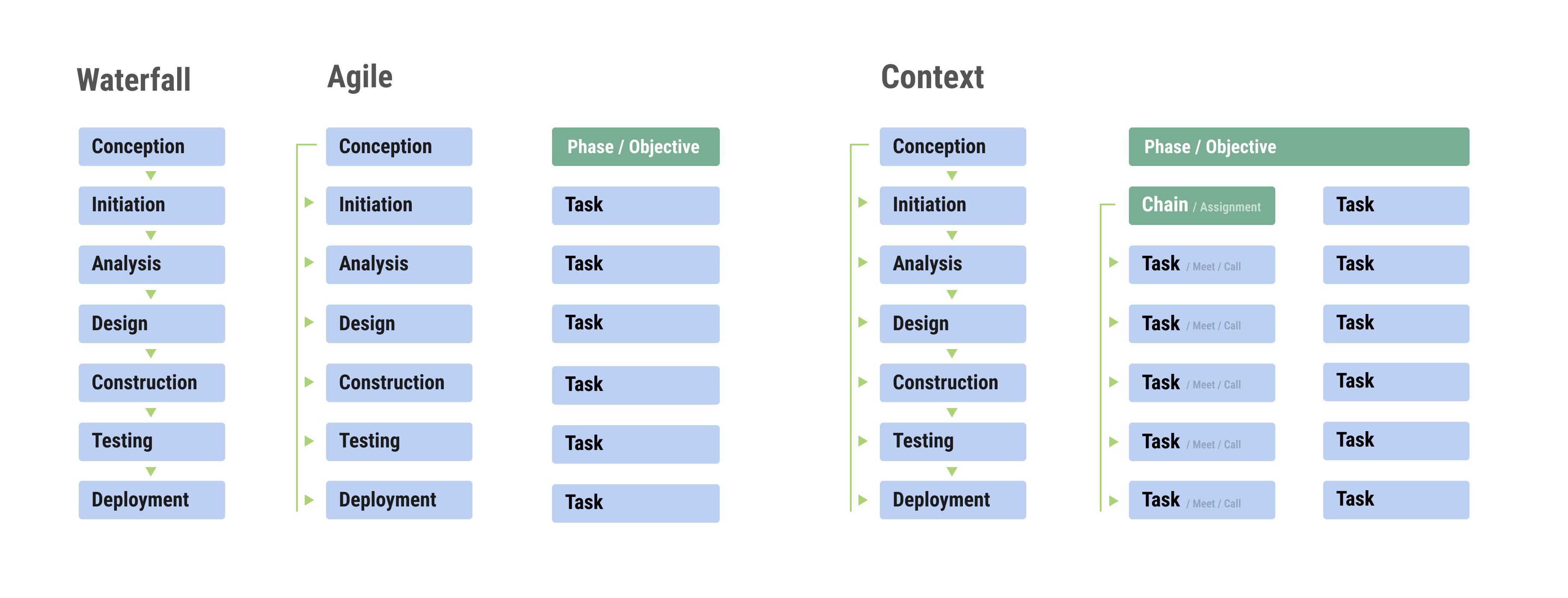
A new concept in work management
Context introduces a new concept — the Chain – a group of tasks and events aimed at completing an objective. Chain is a workspace that exists along with tasks, as a more сompound assignment or workflow. Its purpose is to bring resources together : people, agents, tasks, communication, and and all relevant context. Chains, like tasks, can reside within stages, milestones, lists, boards, and can be related to each other or to other tasks.

The concept of Сhains might be misunderstood as a parent-child relation or as grouping tasks by tags, types, or any attrubute. In fact, Chain is an approach and a way to visualize (and navigate) team assignments, objectives and workflows. The context in chains lies beyond related tasks and attributes — it also includes or may include:
- plan, structure, unifying interface
- internal/external participants
- AI-agents, automations, scenarios
- meetings, chats, calls, emails
- additions, changes, versions
- files, forms, pages, tables
- related approvals
- deviations through branches
- statuses, types, d-lines, priorities, tags
- custom attributes
- history & analitycs

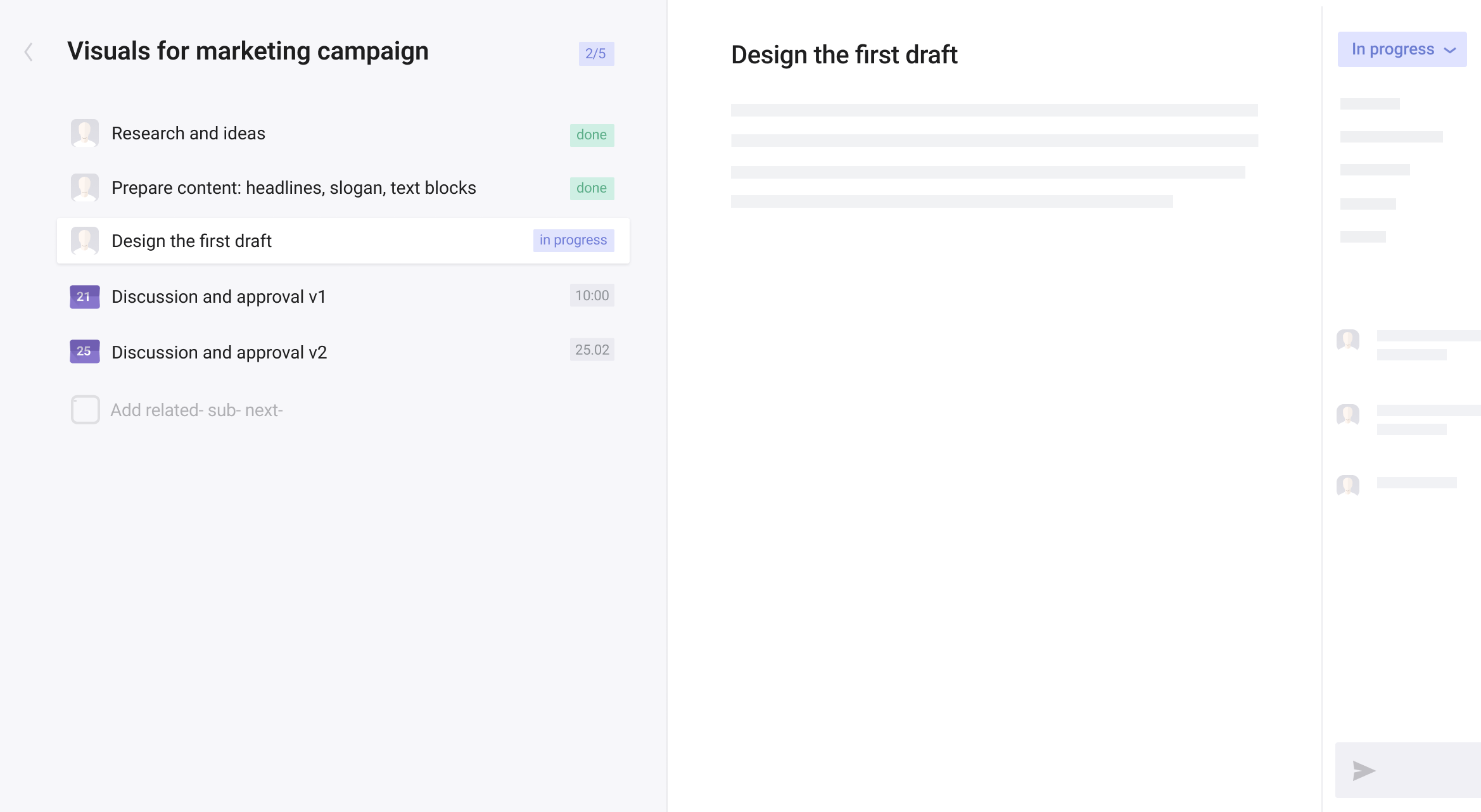
Examples of Chains:
- Client feedback followed by a series of task edits
- Working on a layout through a chain of actions and approvals
- Several tasks connected by meaning or topic
- A complex assignment involving multiple participants
- An assignment following a framework or scenario
- Competitor analysis, marketing research
- Making changes, working on versions, and revisions
Advantages of chain application and why they should be used:
1. A lot of information is scattered: searching for and switching context takes time.
- Chains keep data integrity and provide quick access to context.
2. In a lot of cases needed context lies beyond the scope of certain task(s).
- Chains are a place to gather context data and relations, by people or AI.
3. A lot of work is a chain of events: follow-up tasks, discussions, add-ons, edits, versions, approvals.
- Chains link events & systematize ongoing teamwork and interactions.
4. A lot of objectives may involve different participants: assignees, colleagues, agents, external actors.
- Chains are a place and a way to visualize and navigate through teamwork and interactions.
5. In a lot of projects and processes discoordination and discommunication occur.
- Chains are collaboration hubs that connect people, data, context and plans.
Context Planning
In Context, a project — just like in classical approaches — is divided into phases, which consist of Weeks (working weeks). Within each Week, tasks and chains are planned depending on the context:
- Precisely – for the entire phase, when deadlines and conditions are clearly defined (Waterfall like)
- Flexibly – at the beginning of each Week, when adaptability is needed (Agile like)
- Hybrid – when part of the phase or Week is planned precisely, and part flexibly.
For flexible and hybrid planning, each Week starts with a review of the previous one and setting priorities for the upcoming one. Realtime assessment, prioritization, and planning are based on Context-driven decisions (see Principle 4).
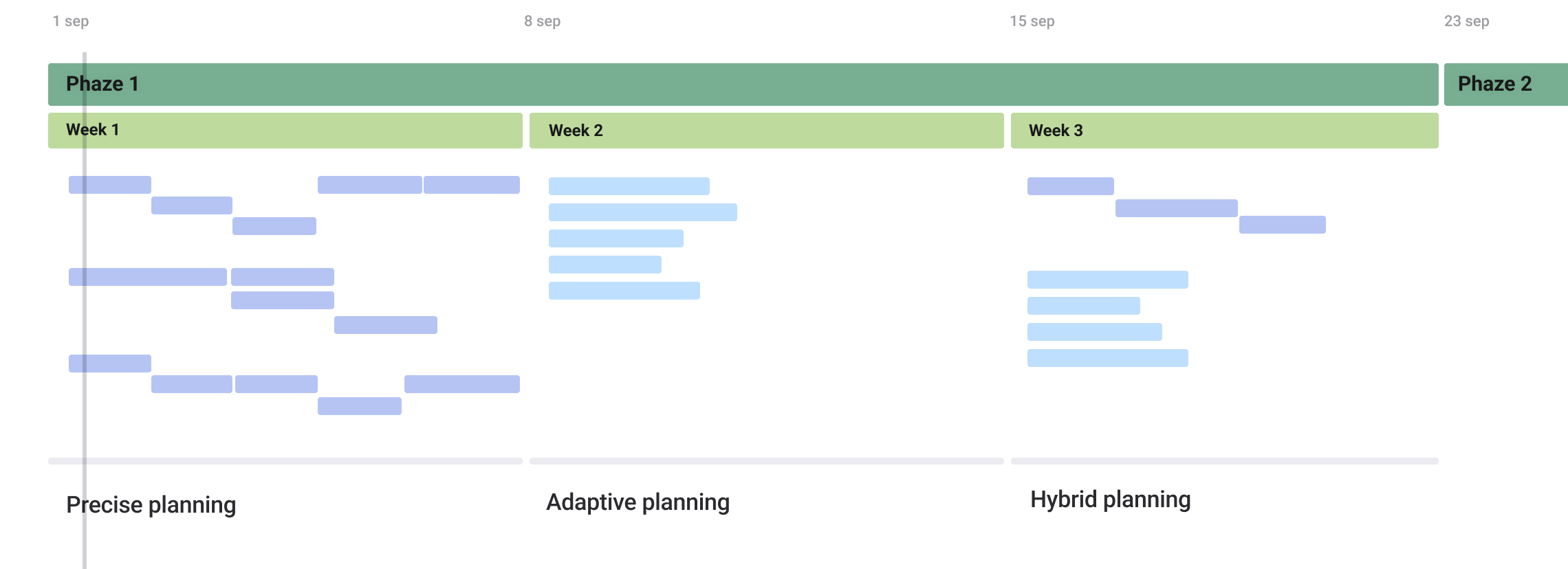
Within the Weeks, single tasks are planned alongside related tasks that are grouped into Chains. Chains and tasks can have links and dependencies — for example, blockers or triggers for further actions.
The duration of Chains depends on the tasks they contain: it can be a daily checklist or an assignment for a couple of months, like a marketing campaign. In longer chains, tasks may be distributed across several Weeks. However, a good practice is to keep Chains within a single phase.
In operational processes, such as accounting or sales, the approach is different. Since these are ongoing subprojects without a defined end date and with a set action plan, planning takes place within the Chains themselves — the steps inside them serve as the actual phases.
The approach to planning and project execution can change during the process. The approach to local task organization is also adaptive. Such smart-organization allows choosing the option that maximizes value for the projects and processes in a given context.
Context connected
Every team member is constantly switching contexts. That costs time — searching for data, re-focusing, immersion, extra communication. To pick up quickly one needs complete, connected information — a comprehensive context. Chains by it’s core — are contextual local hubs, where each participant sees their task and everything related to it: other tasks, assignees, discussions, information, statuses, deadlines, interactions, and history. The goal is maximum context availability.
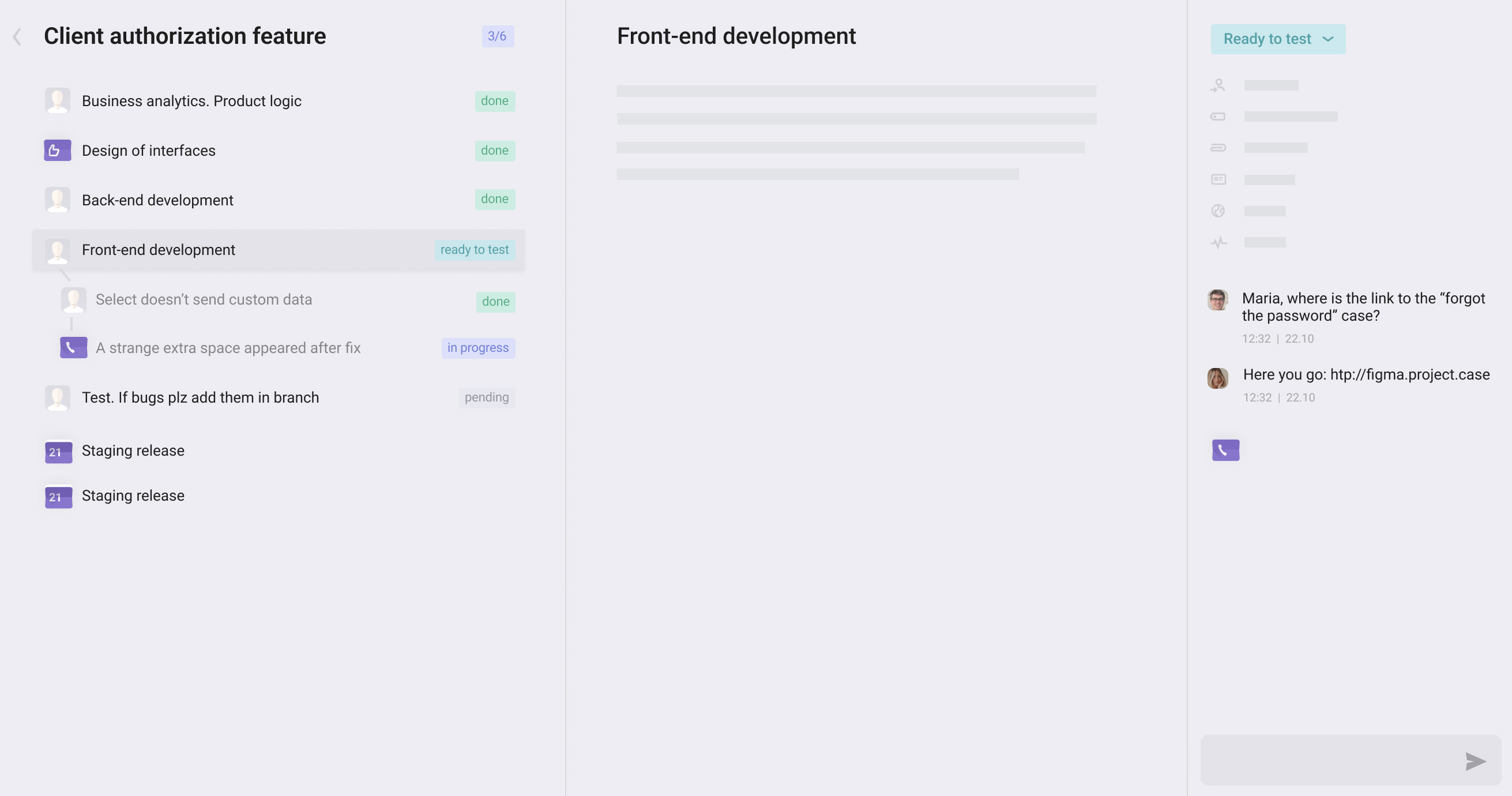
Communication is a key part of context. Related tasks and meetings are grouped into Chains — both planned and dynamic. For example:
- a series of tasks leads up to a meeting
- working on a document unfolds a series of tasks, meetings, and approvals
- after a meeting, related tasks or follow-up meetings continue within the same Chain
Examples:
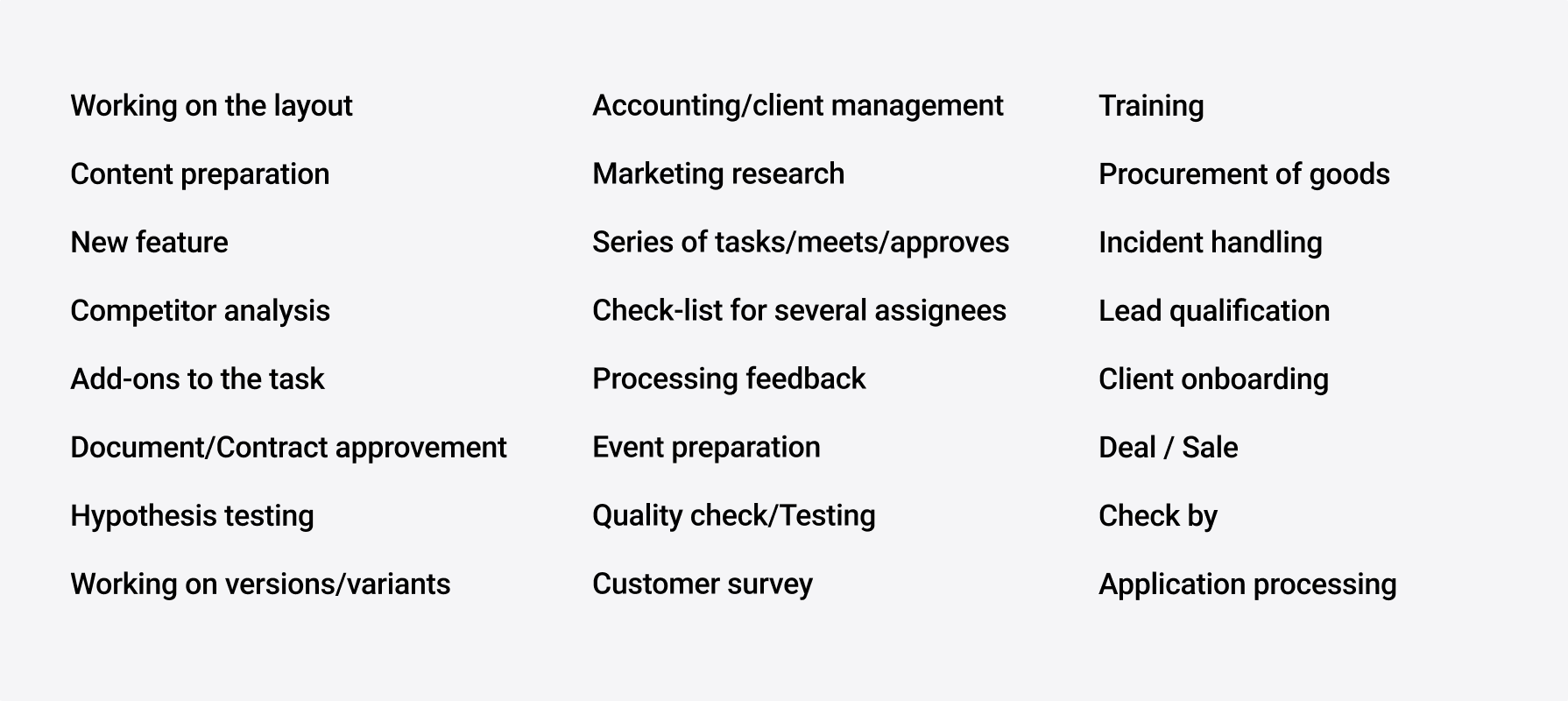
What to do?
1. Use Chains as an additional layer of task organization
2. Consolidate resources and context around local goals
3. Manage projects and workflows through a hybrid organization
4. Group related tasks and discussions into chains
Plan locally –
integrate local plans
into the team workspace
In Context alongside project planning, local planning is used.
Chain planning
This is an approach to organizing assignments, where tasks are linked into Chains and displayed as an action plan. In many practical cases, Chains significantly reduce micromanagement while improving coordination and alignment across the team. Participants have access to context, better understand logical connections between tasks, and roles – both their own and others.
Use cases for chains depend on the conditions of the assignments:
Sequence. Is a chain of tasks, meetings and approvals. It can be planned in advance and have deadlines, while maintaining flexibility and allowing add-ons. For example: document approval, where discussion and confirmation occur step-by-step with different participants.
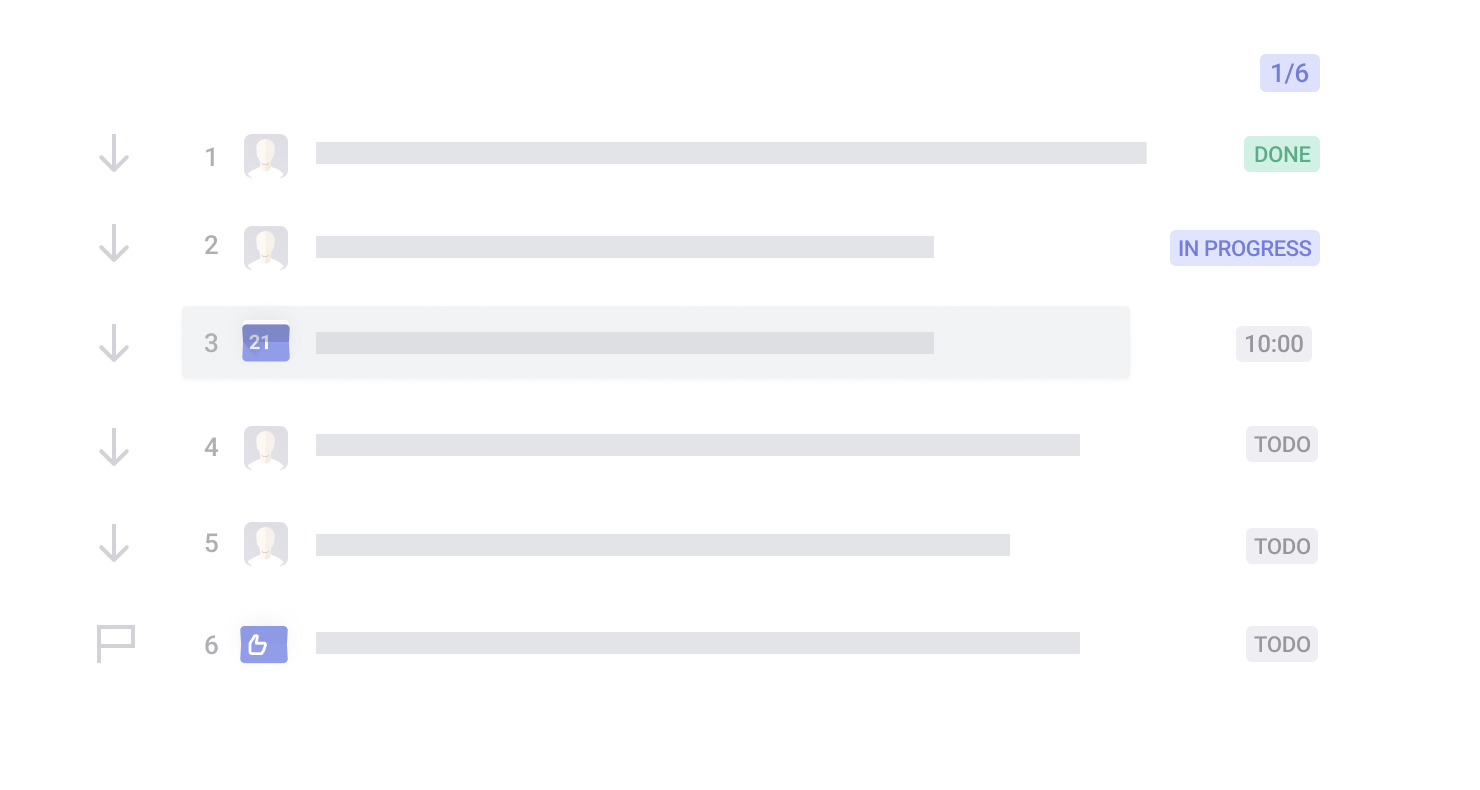
Bundle. Is a group of tasks, meetings and approvals where the primary factor is the contextual connection between tasks, rather than their sequence. For example: event preparation, competitor analysis, market research, parallel testing, etc.
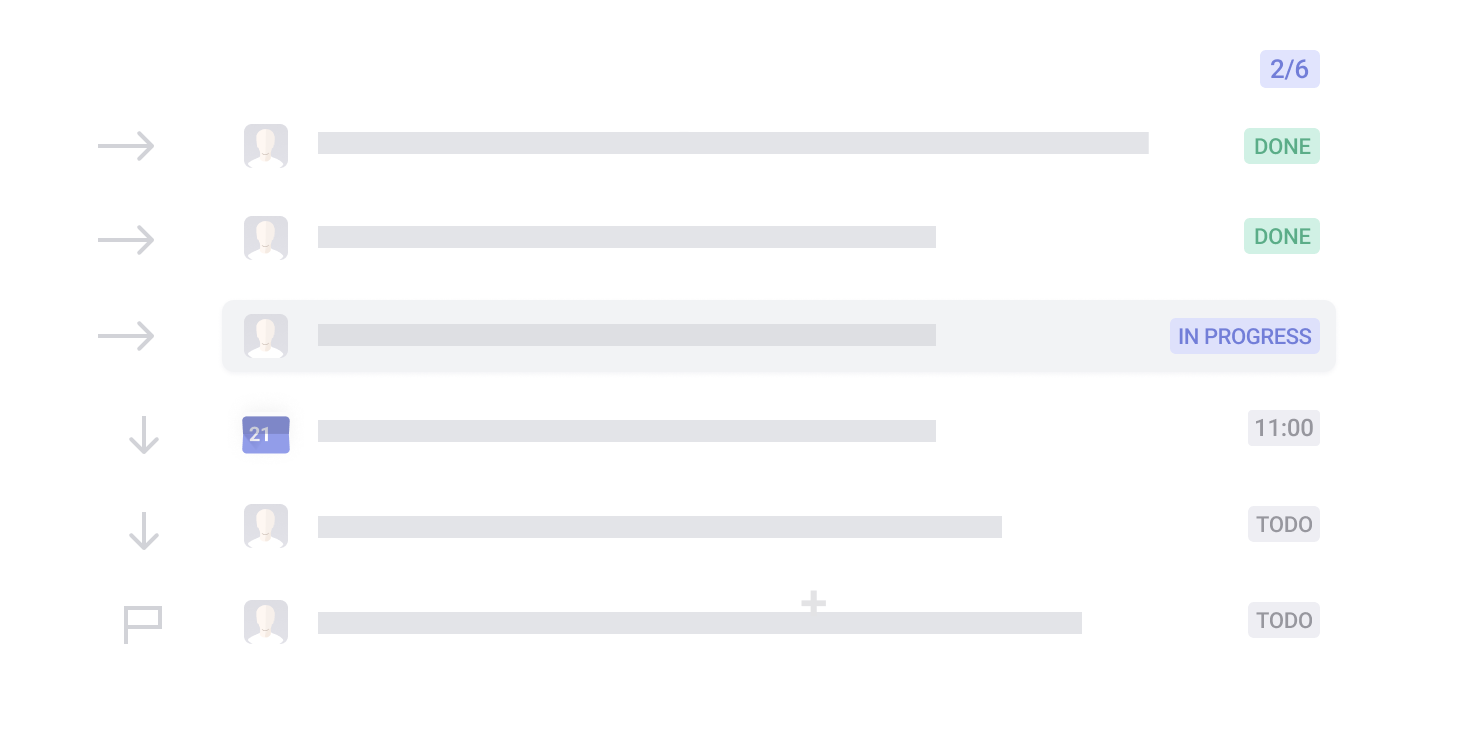
Workflow. Is a scenario of actions with “if-then” conditions and triggers. It is used in processes with a standard set of steps. For example: a customer request for a product or service — a task chain is created for the relevant department, and the scenario adapts based on the request type and data.
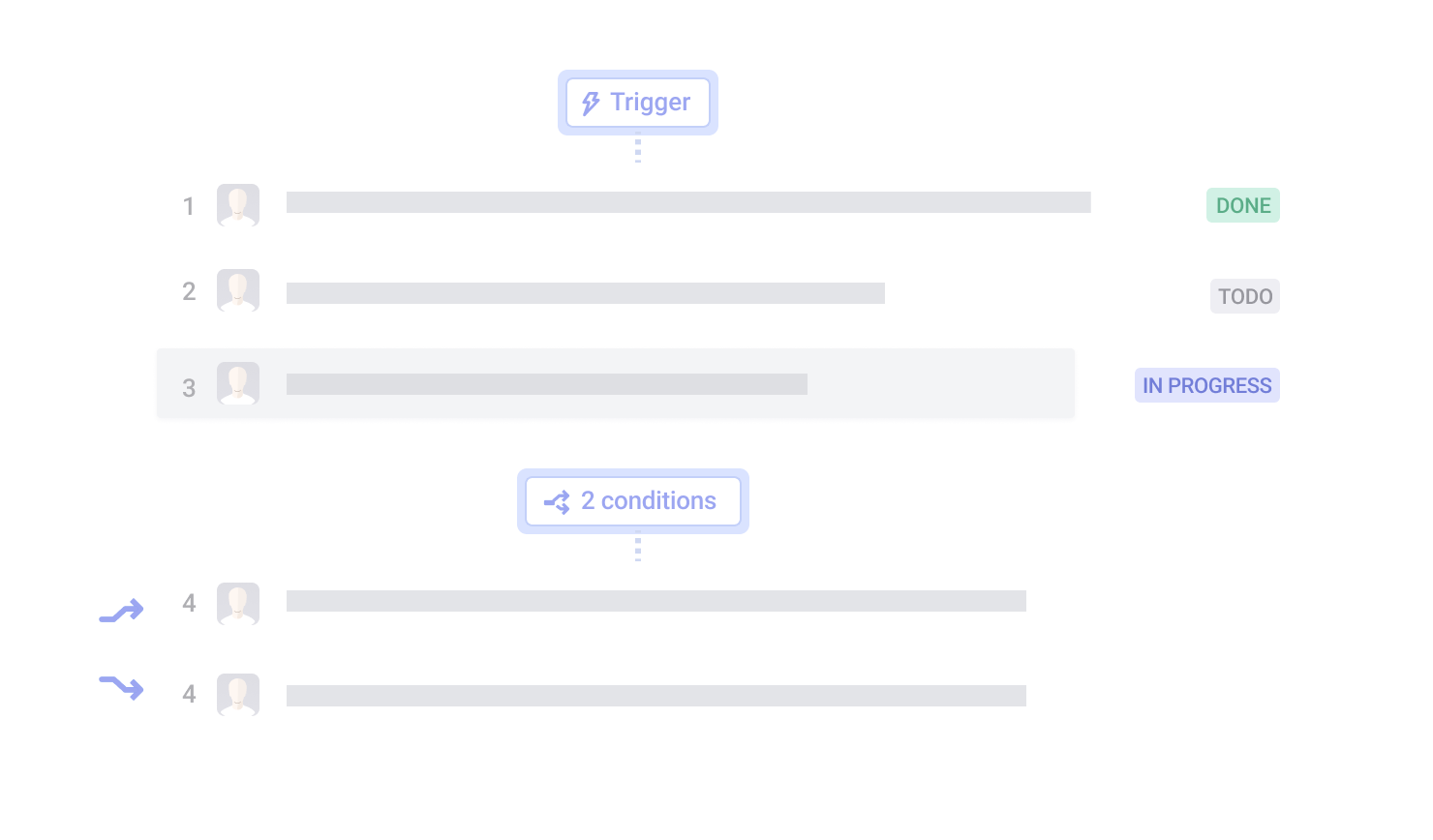
Subproject. Is a complex assignment with basic project properties: goal, duration, phases, plan, tasks, deadlines and participants. In such projects steps serve as phases. For example: client accounting, marketing campaign, competitor analysis, landing page launch, training.
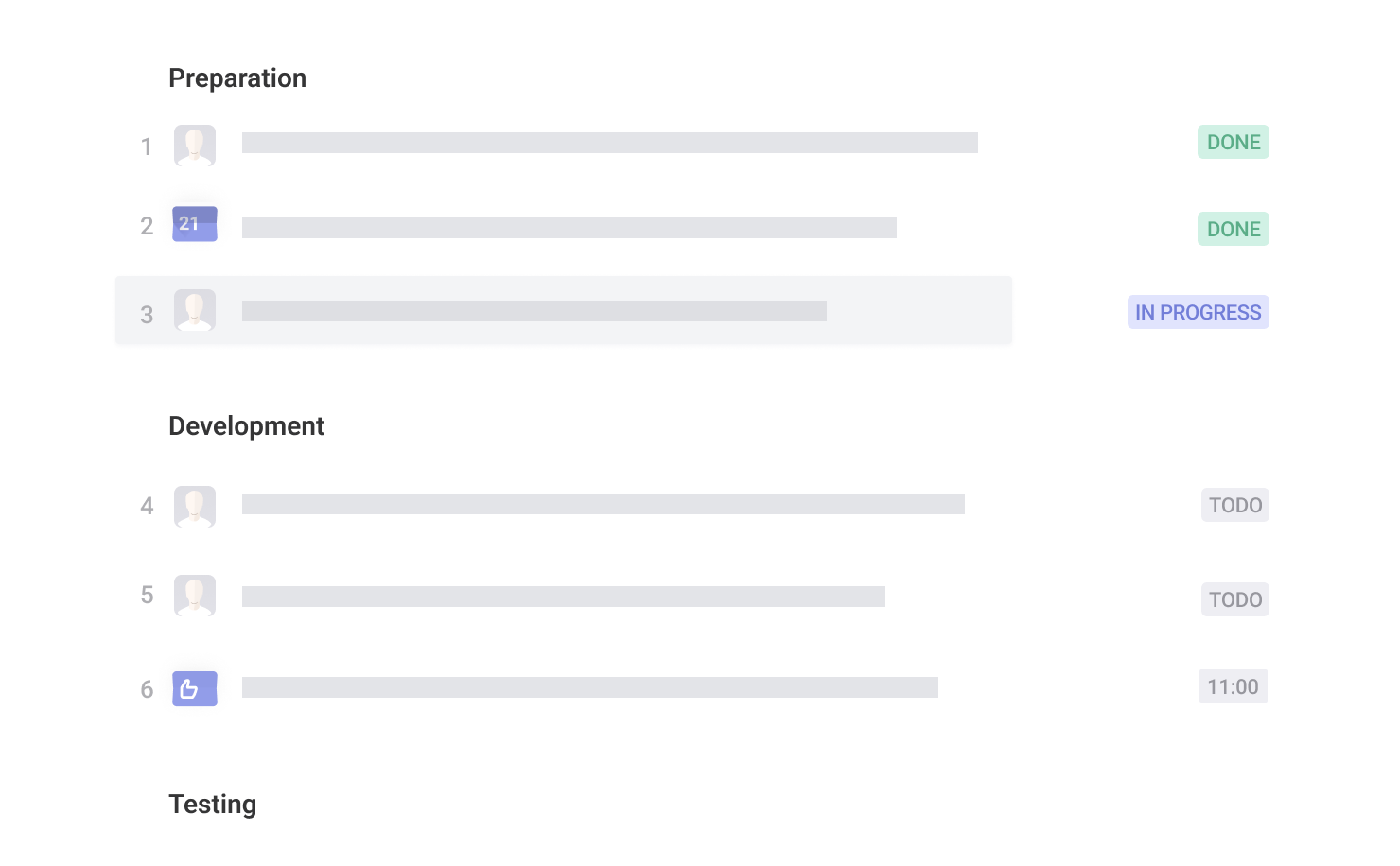
A good practice in the work of a team is the use of Chain-templates — frequent cases and assignments where an action plan is important, are saved as frameworks and scenarios. For example: testing, onboarding, handling feedback, requests, etc.

A key Context tactic is to avoid over-management — when more time is spent on organizing tasks rather than on completing them. When needed, the team either creates a single task, continues the task or meeting within a dynamic Chain, or plans a chain of actions.
Benefits of Chains:
- Elimination of personal interpretations – through a precise sequence of actions
- Decrease of miscommunication – through uniting participants around tasks
- Quick access to information – through context connectivity in one place
- Improved coordination – through organizing related tasks into structured flows
- Business process modeling – through conditions and automation
- Use of best practices – through templates, frameworks, and case studies
Timeview planning
In most cases, planning tools are the manager’s prerogative. In Context, however, time is also managed by assignees. Timeview planning – is an approach to local organization for tasks/meets on a timeline that combines precision and flexibility. To draw a parallel, it works like a zoom-in Gantt chart for each team member.
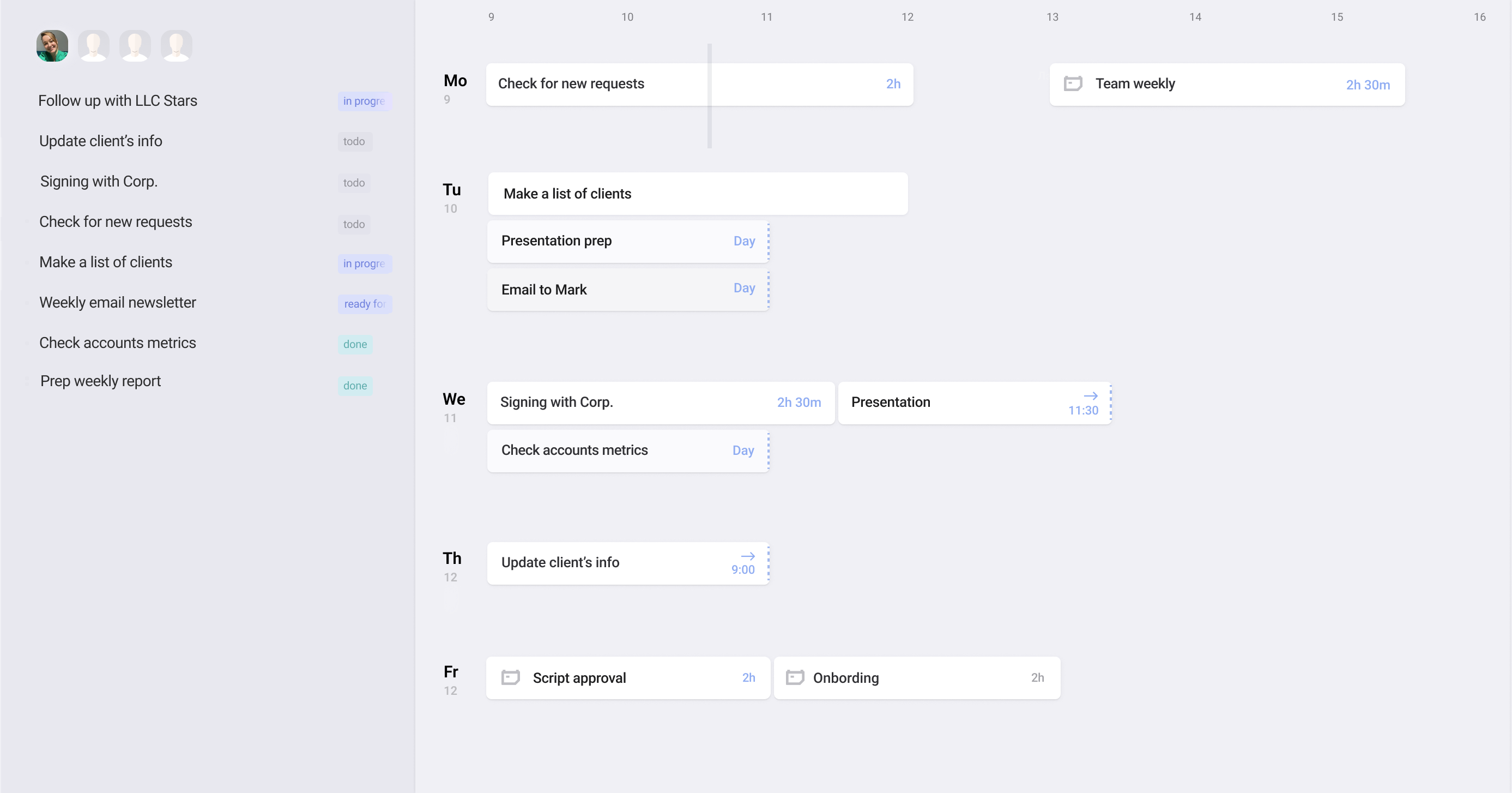
Tasks and meetings are scheduled by team members for a weekly period, either individually or together with a manager:
- During the day, without fixed times, arranged vertically (higher position = higher priority)
- With a start time, without end time
- With both start and end time, when needed
The purpose of Timeview planning:
- to visualize time as a measurable and limited resource
- to match available time with workload and priorities
- to provide assignees with a tool for time-management and self-organization
- to share responsibility for deadlines and priorities with the team
What to do?
1. Organize tasks starting from the local level
2. Apply various relations depending on the scenarios
3. Combine adaptability and precision, considering context
4. Work on tasks on a timeview
5. Foster a culture of time-management within the team
Systematize team work and interactions
as a chain of events
Dynamic chains
Many tasks – cannot be completed by a single assignee and involve others: the team, the client, the manager, other departments or external actors. Working on a task or assignment is often a path where edits, additions, discussions, versions and revisions occur. This leads to additional tasks, meetings, approvals and calls, related tasks are assigned and follow-up meetings are scheduled...
In practice, however, these changes are not systematized — communications are fragmented, information is scattered, dependencies and responsibilities are unclear and the process history gets lost. In Context, the team links work processes in dynamic chains, maintaining integrity. All changes preserve context and become structured.
For example:
- A client makes changes to a task — a new task is linked to the previous ones. Participants stay in context
- After a meeting, related tasks continue within the chain. Process integrity is maintained
- Additional task is assigned to another department — deadlines, statuses, and assignees are tracked within the Chain
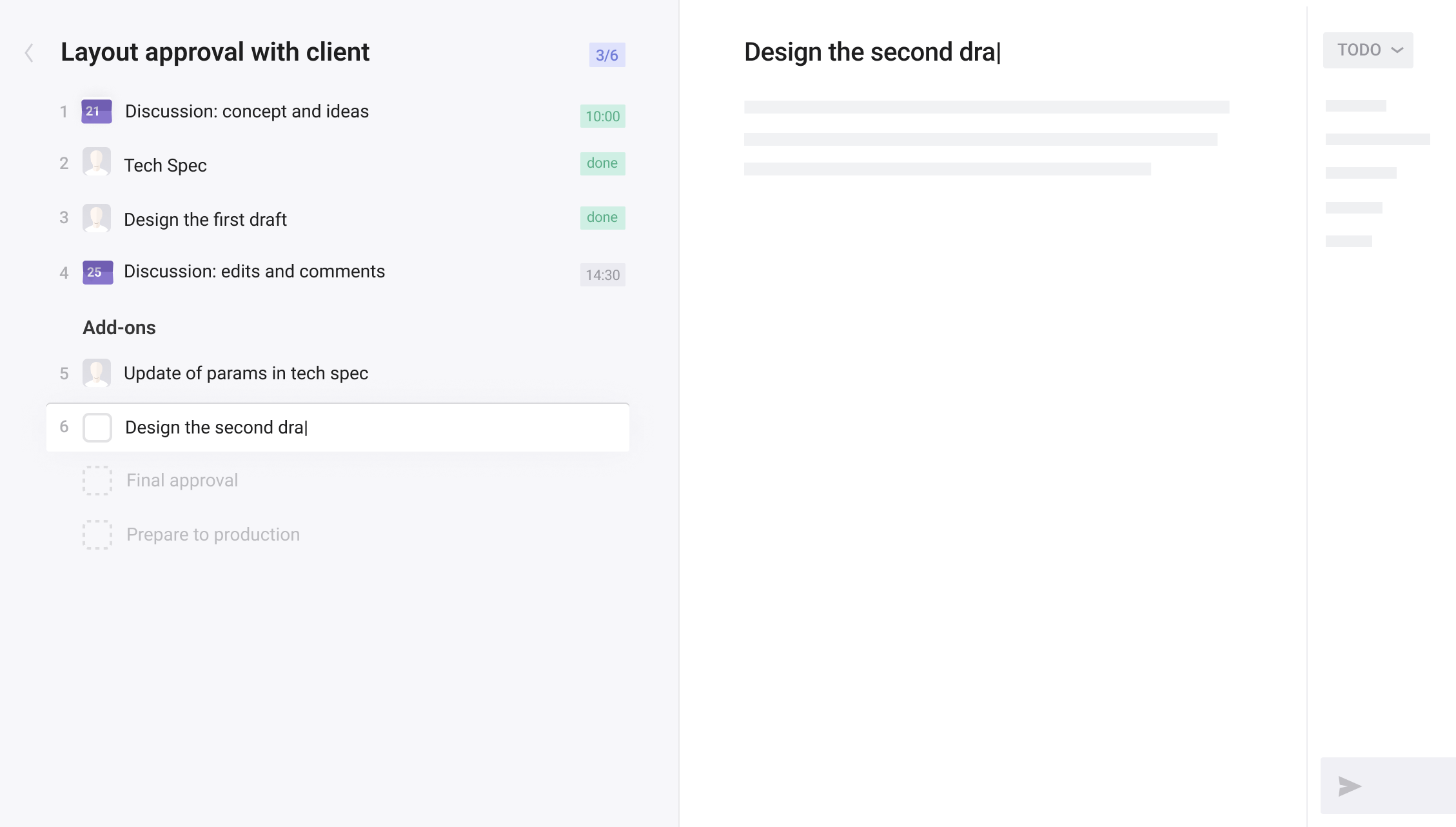
Deviations from plan
During the work plan deviations, blockers, unforeseen events, bug fixes, unusual situations emerge. In Context these are handled as branches. When needed, an individual task or meet can spawn – a single task or an entire chain of linked tasks, discussions, approvals. Deviations from plans become more visible, analyzable, manageable and systematic.
For example
- A task isn’t completed on time due to blockers — lack of data and the need for approvals. This is visualized in a branch of additional tasks and interactions
- An account manager guides a client through a scenario, along the way receives non-standard requests for another department — these tasks and interactions are handled in a branch
- One of the assignees makes a mistake and delays the assignment. The issue is addressed within a branch
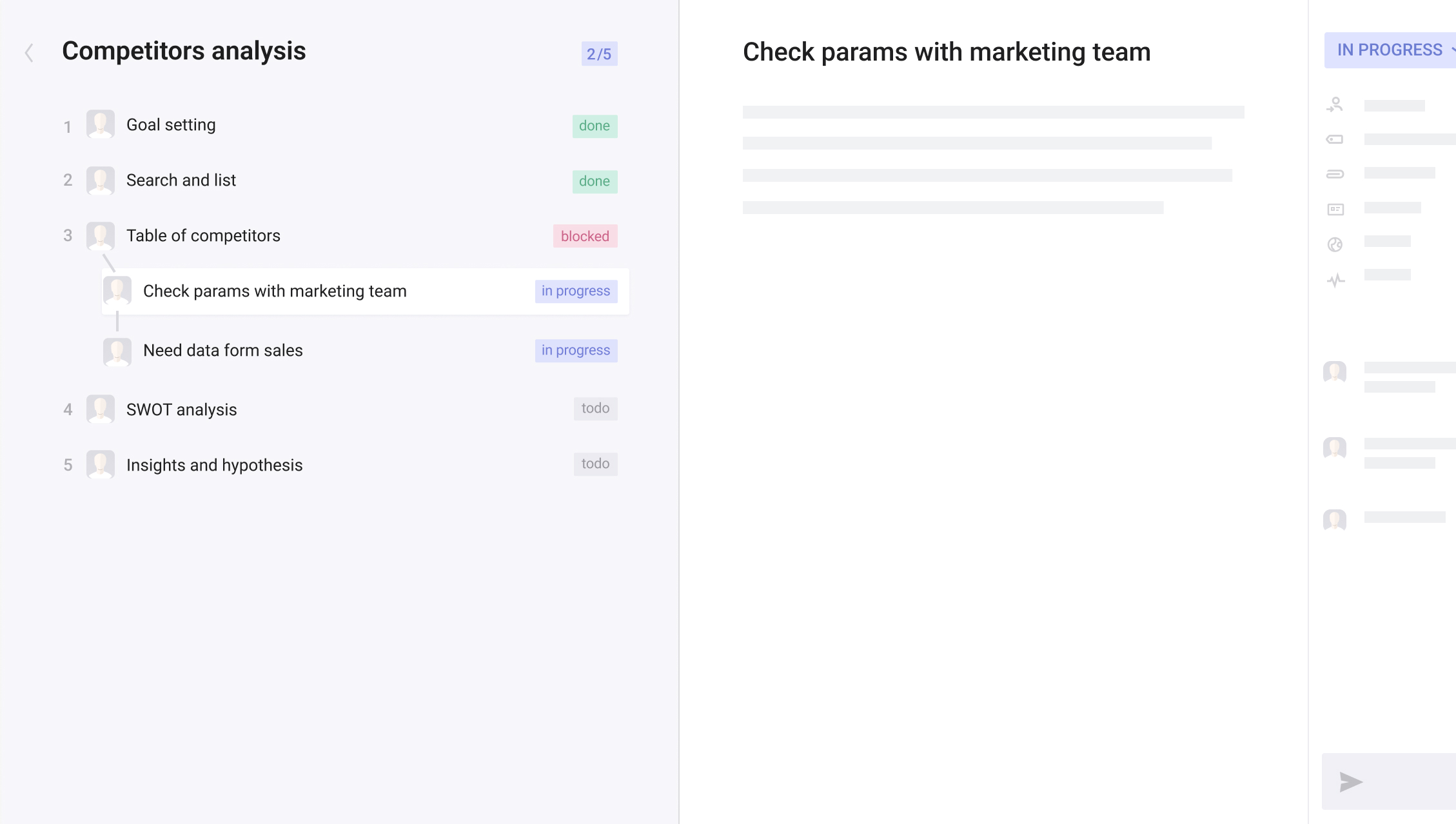
What to do?
1. Link changes and edits to the original task or assignment
2. Group additional tasks, meetings, and calls into a single thread
3. Use Chains to manage versions, variations, and approvals
4. Visualize deviations so they can be tracked easily
Principles 4-6 will be published soon. Here’s a brief preview:
Put processes on rails with human and agent intelligence
Order and process organization are the core of any business. Companies are systems. Successful companies are systems that are organized better than others. This principle is about how to build operational processes and put them "on rails". It is about precision, adherence to scenarios, performance evaluation, automation, and control.
Key points:
1. Eliminate personal interpretations — through clear step-by-step procedures
2. Organize processes — by integrating of tasks into predefined scenarios
3. Automate processes — by using triggers, conditions, and actions
4. Ensure structured data flow — through fields and forms in tasks
5. Improve coordination — by linking tasks, data, and assignees
6. Apply best practices — through templates, workflows, and use cases
7. Track business process performance — through context-driven analytics
To be continued..
Build a culture
of context-driven
analysis and decisions
This is an in-work analysis of data or events, where the interpretation of results and decision-making are influenced by the specific context. Not only statistical data is taken into account, but also the Why, When, and under What conditions. This approach is applied by managers — for strategic decisions, and by teams — for retro- and futurespectives. CD analytics transforms dry numbers into stories that enable more comprehensive and balanced decision-making.
Principles of CDAD:
- Passive data collection — nformation is collected during the course of work
- Integration of context — applying contextual factors: business, customer, temporal, event-based, technical, operational
- Dynamic interpretation — the same metrics mean different things under different circumstances
- Focus on action — analysis provides solutions relevant to current capabilities and goals
- Focus on action — analysis provides solutions relevant to current capabilities and goals
- In-work evaluation and decision-making — are made/taken during the work process at different levels
Turn workdata
into fuel for AI
and resource for people
To be continued..